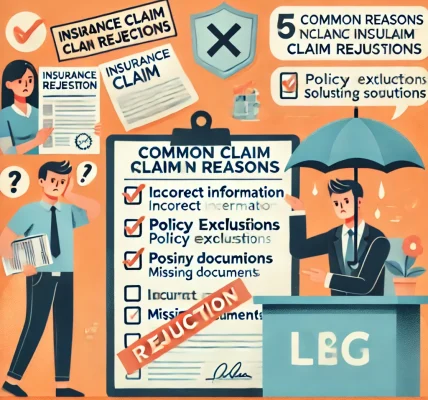Introduction
Natural disasters such as hurricanes, earthquakes, floods, and wildfires can cause significant damage to homes, businesses, and personal property. Having insurance coverage for these calamities can provide much-needed financial relief. However, filing a natural disaster insurance claim requires understanding the process to ensure smooth and successful compensation.
This article will guide you through the steps of filing a natural disaster insurance claim, common mistakes to avoid, and tips to maximize your compensation.
Understanding Natural Disaster Insurance Coverage
1. What is Covered?
Most standard insurance policies provide coverage for damages caused by natural disasters, but the extent of coverage depends on the type of policy you hold. Some common types include:
- Homeowners Insurance: Covers damages to the structure and personal property due to windstorms, wildfires, or hail.
- Flood Insurance: Required separately, as most standard home insurance policies do not cover flood damage.
- Earthquake Insurance: A separate policy covering damages caused by seismic activities.
- Business Interruption Insurance: Covers financial losses suffered by businesses due to disasters.
2. What is Not Covered?
- Normal wear and tear of property.
- Damages caused by negligence.
- Some policies exclude certain disasters, such as floods or earthquakes, unless purchased separately.
How to File a Natural Disaster Insurance Claim?
Step 1: Ensure Safety and Prevent Further Damage
- Prioritize the safety of your family and pets.
- If possible, take immediate measures to prevent further damage (e.g., covering broken windows, moving valuables to a dry area).
Step 2: Notify Your Insurance Provider Immediately
- Most insurers have a time-sensitive claim filing window (e.g., within 24-72 hours of the disaster).
- Provide initial details, including the type of disaster and extent of damage.
Step 3: Document the Damage Thoroughly
- Take clear, high-resolution photos and videos of all damages before cleaning up.
- Keep records of destroyed personal items and their approximate value.
- Note down important details such as the date, time, and impact of the disaster on your property.
Step 4: File a Claim with Necessary Documents
- Duly filled claim form (provided by the insurance company).
- Proof of ownership (home deeds, receipts for appliances, etc.).
- Photos and videos of damage.
- Repair estimates from contractors (if required by the insurer).
- Official disaster reports (if applicable).
Step 5: Work with an Insurance Adjuster
- Your insurer will send an adjuster to assess the damage.
- Provide all necessary documents and cooperate to ensure an accurate assessment.
- Get an independent assessment if you suspect an underestimation of damages.
Step 6: Review Settlement Offer and Negotiate if Needed
- Carefully review the insurer’s offer.
- If the compensation is inadequate, appeal the decision with additional evidence.
- Seek legal advice if you feel the claim has been unfairly denied.
Common Reasons for Claim Denial and How to Avoid Them
- Lack of Proper Documentation: Always keep records of damages, expenses, and communication with the insurer.
- Delayed Filing: File the claim as soon as possible to avoid missing deadlines.
- Policy Exclusions: Check your policy to ensure the specific disaster is covered.
- Inadequate Proof of Ownership: Keep receipts and proof of purchase for valuable items.
- Failure to Maintain the Property: Regularly maintain your home to prevent insurers from denying claims due to negligence.
Tips to Maximize Your Insurance Claim Compensation
- Read Your Policy Carefully: Understand what is covered and what is not.
- Get Multiple Repair Estimates: This helps in negotiating a fair payout.
- Work with a Public Adjuster: If needed, a third-party adjuster can help negotiate with the insurer.
- Stay Persistent: Follow up regularly with the insurer and keep all communication documented.
What to Do If Your Claim Is Denied?
- Request a Detailed Explanation: Understand the reasons for denial.
- Provide Additional Evidence: Submit more documentation if required.
- File an Appeal: Follow the insurer’s appeal process.
- Seek Legal Assistance: Consult an attorney if you believe the claim was unfairly denied.
Conclusion
Filing a natural disaster insurance claim can be overwhelming, but with proper documentation and knowledge of the process, you can increase your chances of a successful settlement. Always report the claim promptly, provide detailed evidence, and review your policy carefully to avoid surprises.
By following these best practices, you can recover financially and rebuild your life after a natural disaster.
Have you ever filed a natural disaster claim? Share your experience in the comments below!



